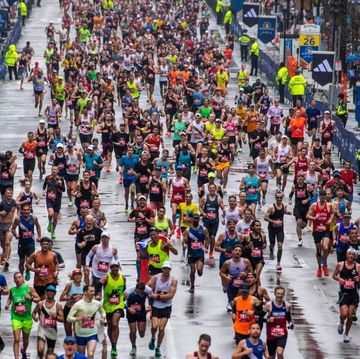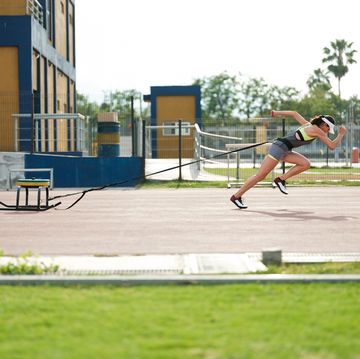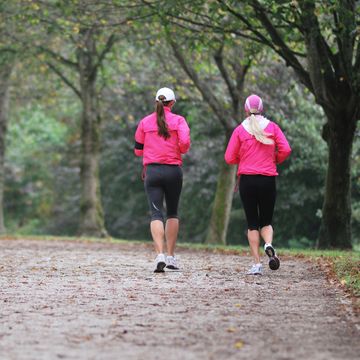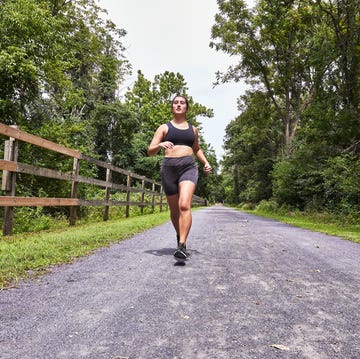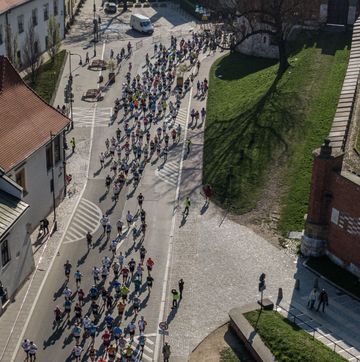Hustle to the locker room—there’s less than an hour to spare. Strapping on a heart rate monitor as you head to the front door, you notice the rain clouds have turned into a storm. The multiple flashes of lightning and the forceful crash of thunder suggest running outside just isn’t worth the risk. Too bad there’s not enough time to wait out the storm. Looks like a day for the treadmill.
As you plug away, you can’t help but notice the calorie expenditure window on the treadmill making its climb. Slowing the treadmill for a cooldown walk you read nearly 800 calories burned. “Fabulous,” you would like to think, but you have reason to be confused, given that your heart rate monitor claims you burned more like 550 calories.
Those who rely on that calorie window at the gym for daily caloric goals may end up feeling only disappointment. It’s not uncommon to be deceived by the calorie expenditure reading of your favorite piece of equipment. For starter, the caloric tally is often based on the average 150-pound male. Moreover, even if you fit this build your calorie expenditure could be quite different.
There are many factors that go into how many calories or energy you burn on a run. I can recall trying to regain my fitness after the birth of my first son. At the conclusion of my 2 hour, 30 minute training runs my heart rate monitor read in the ballpark of 1,600 calories burned. About one year and much more fitness later, my heart rate monitor read nearly 200 calories less for the same 2:30 run. Evidently my fitness level and running efficiency played a role in how much energy was required to complete the run.
Last year, the Journal of Athletic Training reported a comparison (PDF) of calorie expenditure among elite distance runners. The study compared body mass, respiratory quotient, and fast-twitch muscle fibers among the runners in relation to their energy expenditure and carbohydrate requirement. It found nearly a 700-calorie-per-day difference among the runners. Those with the higher body mass, respiratory quotient, and a greater percentage of fast-twitch muscle fibers burned an average of 3,750 calories per day, as compared to the lower body mass runners, who burned closer to 3,100 calories per day. Similarly, the higher body mass group required more carbohydrates versus the lower body mass group.
It goes to show that, even at the highest level, no two runners are alike. Body composition, training, and metabolism are too varied to say there’s a set amount of calories burned on a run. Watching the calories-burned window on any given piece of equipment may be a poor representation of how much energy you’re expending.
Having a heart rate monitor with your personal data, such as weight, height, and age, entered into the system is a much better start in targeting how many calories you burn during a bout of exercise. That said, try not to obsess over those numbers. Listening to your body is still very important. All too often calorie counting becomes so much of a concern that good nutrition falls by the wayside. This may take shape in starving the body to achieve a lower body weight. Or, just the opposite by having frequent splurges on meals such as French fries and double chocolate cake because you burned “X” amount of calories.
Sure, use the calorie expenditure on your heart rate monitor as a guide. Even compare it to the workout equipment at the gym. Knowing your general caloric expenditure can be an eye opener in knowing how much or how little you burn in a workout. However, don’t place too much emphasis on these numbers. Stay tuned into good nutrition, hunger cues, and proper fueling for your individual training program.
* * *
Jackie Dikos, RD, is a 2:45 marathoner and mother of two.





